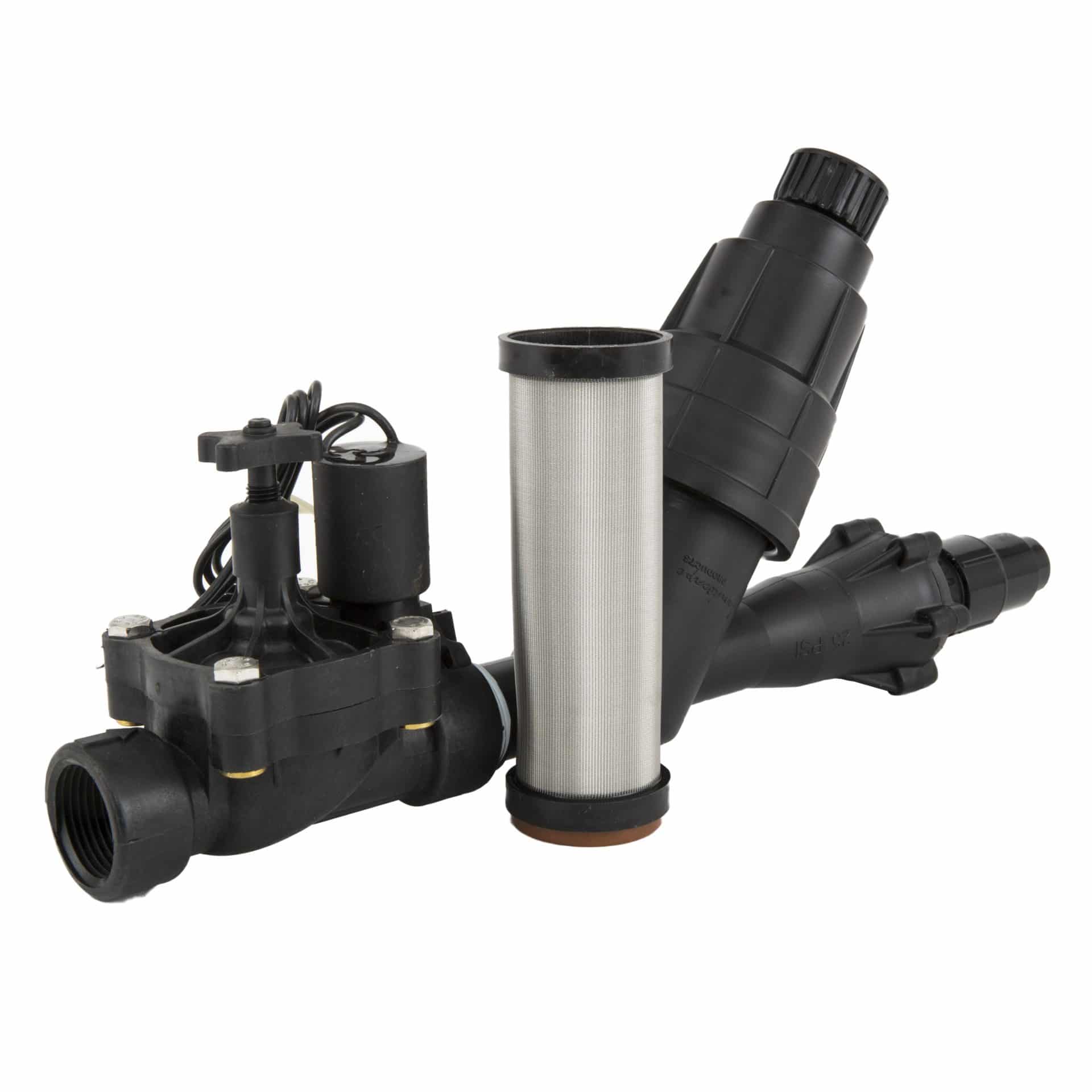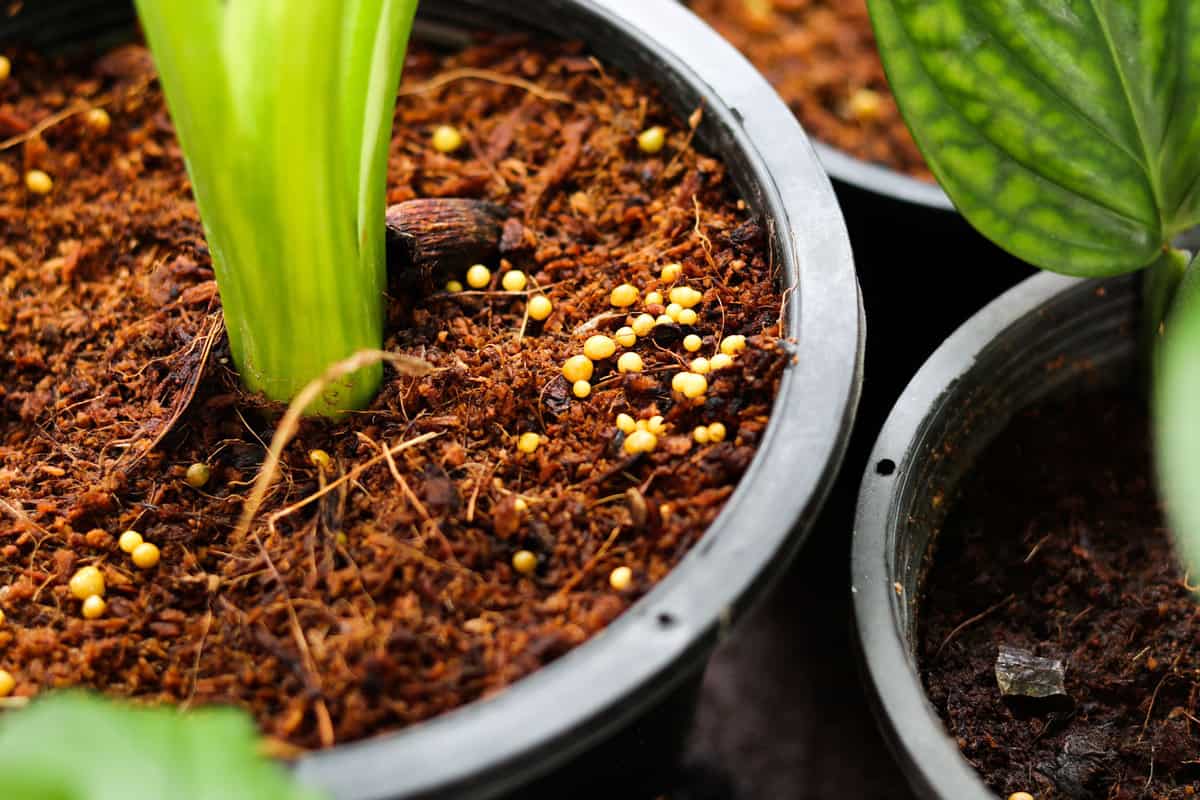Home>Gardening Techniques>DIY Projects>Bonsai Velocity Oxygen Regulator: How To Use


DIY Projects
Bonsai Velocity Oxygen Regulator: How To Use
Published: January 19, 2024
Learn how to use the Bonsai Velocity Oxygen Regulator for your DIY projects. Ensure safety and precision with our step-by-step guide.
(Many of the links in this article redirect to a specific reviewed product. Your purchase of these products through affiliate links helps to generate commission for Chicagolandgardening.com, at no extra cost. Learn more)
Table of Contents
- Introduction
- Understanding the Bonsai Velocity Oxygen Regulator
- Preparing the Bonsai Velocity Oxygen Regulator for Use
- Attaching the Bonsai Velocity Oxygen Regulator to an Oxygen Source
- Adjusting Oxygen Flow with the Bonsai Velocity Oxygen Regulator
- Safety Precautions and Maintenance for the Bonsai Velocity Oxygen Regulator
- Conclusion
Introduction
Welcome to the world of DIY projects! Whether you're a seasoned hobbyist or just venturing into the realm of hands-on craftsmanship, the Bonsai Velocity Oxygen Regulator is a valuable tool for various endeavors. This precision instrument is designed to deliver a consistent flow of oxygen, making it an essential component for tasks such as glassblowing, jewelry making, and metalworking. In this guide, we will delve into the intricacies of the Bonsai Velocity Oxygen Regulator, providing you with a comprehensive understanding of its functionality and usage.
The Bonsai Velocity Oxygen Regulator boasts a user-friendly design, making it accessible to both beginners and experienced artisans. By mastering the proper techniques for utilizing this regulator, you can elevate the quality of your projects while ensuring a safe and efficient work environment. Throughout this article, we will explore the step-by-step process of preparing, attaching, and adjusting the Bonsai Velocity Oxygen Regulator, empowering you to harness its full potential.
As we embark on this educational journey, it's important to note that safety should always be a top priority when working with any equipment, including the Bonsai Velocity Oxygen Regulator. By adhering to the recommended safety precautions and maintenance practices, you can safeguard not only the functionality of the regulator but also your own well-being. So, without further ado, let's unravel the mechanics of the Bonsai Velocity Oxygen Regulator and unlock its capabilities for your DIY projects.
Understanding the Bonsai Velocity Oxygen Regulator
Before delving into the operational aspects, it’s essential to grasp the fundamental components and functionalities of the Bonsai Velocity Oxygen Regulator. This precision instrument serves as a critical link between the oxygen source and the tools or torches used in various DIY projects. The regulator is equipped with a pressure gauge, which provides a clear indication of the pressure level within the oxygen tank, enabling users to monitor and adjust the flow as needed.
One of the key features of the Bonsai Velocity Oxygen Regulator is its ergonomic design, which facilitates effortless handling and operation. The ergonomic hand-tight knob allows for quick and secure attachment to the oxygen source, minimizing the setup time and ensuring a reliable connection. Additionally, the regulator is engineered with a durable brass body, enhancing its longevity and resilience in diverse working environments.
Furthermore, the Bonsai Velocity Oxygen Regulator is equipped with a high-contrast gauge that enables users to accurately set the desired flow rate. This precision is particularly advantageous for intricate tasks that demand a consistent and controlled supply of oxygen. Whether you’re engaged in glass fusing, beadmaking, or soldering, the regulator’s ability to maintain a steady flow empowers you to execute intricate designs with precision and finesse.
Another noteworthy aspect of the Bonsai Velocity Oxygen Regulator is its compatibility with a wide range of oxygen tanks, offering versatility and adaptability for various projects. Whether you’re utilizing small disposable tanks or large stationary cylinders, the regulator’s universal compatibility ensures seamless integration with different oxygen sources, catering to the unique requirements of your DIY endeavors.
By comprehending the inner workings and design elements of the Bonsai Velocity Oxygen Regulator, you gain a deeper appreciation for its role as a facilitator of creativity and precision in DIY projects. In the subsequent sections, we will explore the step-by-step process of preparing, attaching, and adjusting the regulator, equipping you with the knowledge and confidence to harness its full potential.
Preparing the Bonsai Velocity Oxygen Regulator for Use
Before embarking on your DIY project, it’s crucial to ensure that the Bonsai Velocity Oxygen Regulator is properly prepared for operation. This involves a series of systematic steps to guarantee the regulator’s functionality and safety. To begin, inspect the regulator for any visible damage or irregularities. Check the pressure gauge, hand-tight knob, and inlet connection to verify that all components are intact and free from defects.
Next, it’s essential to ascertain that the regulator is compatible with the specific oxygen source you intend to use. Different oxygen tanks may require varying types of fittings or adapters to establish a secure connection with the regulator. Ensure that the regulator’s inlet connection aligns with the valve outlet of the oxygen tank, and if necessary, procure the appropriate fittings to facilitate a seamless attachment.
Once the compatibility is confirmed, carefully attach the Bonsai Velocity Oxygen Regulator to the oxygen tank, utilizing the ergonomic hand-tight knob to secure the connection. Exercise caution to avoid over-tightening, as this may lead to damage or leakage. The hand-tight knob’s user-friendly design enables swift and secure attachment, streamlining the setup process and minimizing the risk of operational errors.
After the regulator is affixed to the oxygen tank, inspect the connection to ensure a snug fit and verify that there are no indications of gas leakage. This visual assessment is a critical safety measure that mitigates the potential risks associated with improper attachment. Once the connection is confirmed to be secure, you can proceed to the next phase of adjusting the oxygen flow to align with the requirements of your specific DIY project.
By meticulously preparing the Bonsai Velocity Oxygen Regulator for use, you lay the groundwork for a safe and efficient working environment. This meticulous approach not only safeguards the regulator’s functionality but also contributes to the overall success and quality of your DIY endeavors. With the regulator securely in place and the necessary preparations completed, you are now ready to proceed with attaching it to an oxygen source and fine-tuning the oxygen flow to suit your project’s needs.
Attaching the Bonsai Velocity Oxygen Regulator to an Oxygen Source
With the Bonsai Velocity Oxygen Regulator meticulously prepared for use, the next crucial step is to seamlessly attach it to an oxygen source. Whether you’re utilizing a refillable oxygen tank or a disposable cylinder, the process of establishing a secure and reliable connection is paramount to the successful operation of the regulator. Begin by positioning the oxygen tank in a stable and accessible location, ensuring that it is free from obstructions and potential hazards.
Prior to attaching the regulator, it’s imperative to verify that the oxygen tank’s valve is tightly closed to prevent any inadvertent release of gas. Once this precaution is taken, align the inlet connection of the regulator with the valve outlet of the oxygen tank, ensuring a precise fit. The ergonomic hand-tight knob of the Bonsai Velocity Oxygen Regulator simplifies the attachment process, allowing for swift and effortless securing of the connection.
Gently rotate the hand-tight knob in a clockwise direction to initiate the attachment, being mindful not to exert excessive force. The user-friendly design of the knob facilitates a secure and leak-free connection, eliminating the need for specialized tools or complicated procedures. As you tighten the knob, pay close attention to any signs of resistance or irregularities, adjusting the attachment as needed to ensure a seamless and airtight fit.
Upon securing the attachment, perform a visual inspection to confirm that the regulator is firmly affixed to the oxygen tank and that there are no indications of gas leakage. This meticulous assessment serves as a critical safety measure, mitigating potential risks and ensuring a hazard-free working environment. By adhering to these systematic steps, you can confidently establish a dependable and secure connection between the Bonsai Velocity Oxygen Regulator and the oxygen source.
With the regulator securely attached to the oxygen source, you are now poised to proceed with the pivotal task of adjusting the oxygen flow to align with the specific requirements of your DIY project. This seamless transition from attachment to adjustment sets the stage for a productive and controlled flow of oxygen, empowering you to channel your creativity and precision into your crafting endeavors.
Adjusting Oxygen Flow with the Bonsai Velocity Oxygen Regulator
Once the Bonsai Velocity Oxygen Regulator is securely attached to the oxygen source, the next pivotal step is to fine-tune the oxygen flow to suit the specific requirements of your DIY project. This precise adjustment is instrumental in ensuring a consistent and controlled supply of oxygen, empowering you to execute intricate designs with accuracy and finesse. The regulator’s high-contrast gauge provides a clear indication of the flow rate, enabling you to make incremental adjustments with precision.
Begin by referring to the recommended oxygen flow specifications for your particular project. Whether you’re engaged in glassblowing, jewelry making, or metalworking, each endeavor may necessitate a distinct flow rate to achieve optimal results. By aligning the regulator’s settings with the prescribed flow rate, you set the stage for a harmonious fusion of creativity and technical precision.
To adjust the oxygen flow, carefully rotate the flow control knob in either direction, depending on whether you need to increase or decrease the flow rate. The knob’s ergonomic design facilitates smooth and responsive adjustments, allowing you to fine-tune the flow with dexterity and control. As you make incremental changes to the flow rate, periodically inspect the gauge to gauge the impact of your adjustments and ensure that the desired flow rate is achieved.
Throughout the adjustment process, maintain a vigilant eye on the pressure gauge to monitor the pressure level within the oxygen tank. This proactive approach enables you to anticipate and address any fluctuations in pressure, ensuring a consistent and reliable oxygen supply throughout the duration of your project. By harmonizing the flow rate with the project’s specifications and maintaining optimal pressure levels, you can elevate the quality and precision of your craftsmanship.
By mastering the art of adjusting the oxygen flow with the Bonsai Velocity Oxygen Regulator, you unlock the potential for unparalleled precision and finesse in your DIY projects. The seamless integration of ergonomic design and precision engineering empowers you to navigate the intricacies of oxygen flow control with confidence and proficiency, amplifying the impact of your creative endeavors.
Safety Precautions and Maintenance for the Bonsai Velocity Oxygen Regulator
When working with the Bonsai Velocity Oxygen Regulator, prioritizing safety measures is paramount to ensure a secure and hazard-free working environment. Adhering to stringent safety protocols not only safeguards the functionality of the regulator but also mitigates potential risks associated with oxygen use in DIY projects. Additionally, implementing regular maintenance practices prolongs the lifespan of the regulator and sustains its optimal performance. Let’s delve into essential safety precautions and maintenance guidelines for the Bonsai Velocity Oxygen Regulator.
Safety Precautions:
- Before attaching the regulator to an oxygen source, ensure that the work area is well-ventilated to prevent the accumulation of oxygen and minimize the risk of fire hazards.
- Verify that the oxygen tank is free from contaminants and flammable materials, as oxygen supports combustion and can intensify the severity of fires.
- When handling the regulator, exercise caution to prevent physical damage or impact, as this may compromise its integrity and functionality.
- Always wear appropriate personal protective equipment, such as safety goggles and gloves, to shield yourself from potential hazards during DIY projects involving oxygen use.
- Regularly inspect the regulator for signs of wear, damage, or leakage, and promptly address any issues to maintain its safety and operational efficiency.
Maintenance Guidelines:
- Periodically clean the exterior of the regulator using a mild detergent and a soft cloth to remove dust and debris, preserving its visual appeal and cleanliness.
- Conduct routine inspections of the regulator’s components, including the pressure gauge and flow control knob, to ensure that they are functioning optimally and are free from obstruction or damage.
- Verify that the inlet connection and hand-tight knob are secure and free from corrosion, tightening or lubricating them as needed to uphold their reliability and effectiveness.
- Store the Bonsai Velocity Oxygen Regulator in a dry and well-ventilated environment, protecting it from extreme temperatures and humidity to prevent deterioration and corrosion.
- Adhere to the manufacturer’s recommended service intervals and maintenance procedures to uphold the regulator’s performance and longevity, seeking professional assistance when necessary.
By conscientiously integrating these safety precautions and maintenance guidelines into your practice, you fortify the operational integrity of the Bonsai Velocity Oxygen Regulator and cultivate a safety-conscious approach to your DIY projects. This proactive approach not only enhances the regulator’s longevity but also fosters a secure and controlled working environment, empowering you to pursue your creative endeavors with confidence and peace of mind.
Conclusion
Congratulations! You have embarked on a comprehensive journey through the intricacies of the Bonsai Velocity Oxygen Regulator, gaining a profound understanding of its functionalities and the systematic process of preparing, attaching, and adjusting it for various DIY projects. By mastering the art of handling this precision instrument, you have equipped yourself with the knowledge and confidence to elevate the quality and precision of your crafting endeavors.
The Bonsai Velocity Oxygen Regulator stands as a testament to precision engineering and ergonomic design, offering a seamless fusion of functionality and user-friendly operation. Its compatibility with a diverse range of oxygen sources, coupled with its ability to maintain a consistent flow rate, positions it as an indispensable tool for artisans and craftsmen across various disciplines.
As you navigate the realm of DIY projects, remember that safety should always remain at the forefront of your endeavors. By implementing the recommended safety precautions and adhering to meticulous maintenance practices, you not only safeguard the operational integrity of the regulator but also prioritize the well-being of yourself and those around you.
Armed with the knowledge gleaned from this guide, you are poised to channel your creativity and precision into an array of projects, from glassblowing and metalworking to jewelry making and beyond. The Bonsai Velocity Oxygen Regulator serves as a steadfast companion on your creative journey, empowering you to breathe life into your artistic visions with unparalleled accuracy and finesse.
As you venture forth, may the seamless integration of ergonomic design, precision engineering, and safety consciousness propel your DIY projects to new heights, fostering a harmonious blend of creativity and technical proficiency. Embrace the transformative power of the Bonsai Velocity Oxygen Regulator, and let your craftsmanship flourish with unbridled precision and ingenuity.




